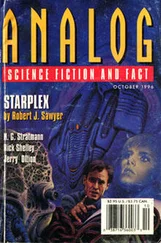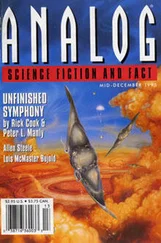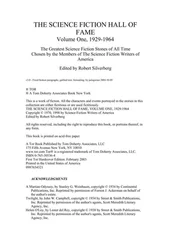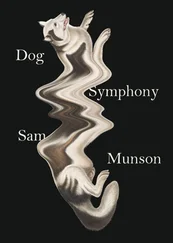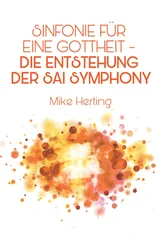Day 1 wasn’t all that encouraging, as scientists seldom stray far from their comfort zones. In spite of lofty rhetoric about “abandoning silos” and “crossing boundaries,” the biologists pretty much talked to biologists, while geophysicists and organic chemists also huddled within their specialized subgroups.
Day 2 was better. Gradually, as a succession of vivid talks provided glimpses of unexplored vistas—the puzzle of carbon in Earth’s core, the enigmatic ancient origins of life, the stately cycling of plate tectonics, hints of a vast subsurface microbial biosphere—we saw our narrow specialties in new, broader contexts. For the first time, we learned about paradoxical, unexplored connections between exploding volcanoes and diamond deposits, plate tectonics and climate change, and chemically reactive minerals and hidden deep life. The fascination of carbon science as a universal integrating theme seduced us.
By the end of Day 3, the structure for a new global endeavor had been framed. Leaders emerged and enthusiasm was high. Observers from the Sloan Foundation felt the energy in the room and saw the commitment in our eyes; they quickly gave a green light for the Deep Carbon Observatory.2 Ours would be a global endeavor of unusual scientific ambition and scope. The prospect was thrilling, but I suspect that every participant also worried about being part of a spectacular, embarrassing, expensive failure.
A decade later, the adventure has exceeded our most ambitious vision. An international army of carbon researchers—more than a thousand scientists from fifty countries—tackles the mysteries of carbon in Earth. With total international funding approaching a half-billion dollars from dozens of agencies and foundations worldwide, the Deep Carbon Observatory represents one of the most comprehensive and broadly interdisciplinary scientific endeavors in history.
As with any successful science program, we have learned a lot, but we’ve also become more keenly aware of how much we don’t know. Nagging, unanswered questions have become more deeply etched, more insistent drivers of future research. The paradox of science is that the more we know, the more we realize is unknown, perhaps even unknowable. Each discovery opens a door to a vaster unexplored landscape.
I’m driven to share some of the emerging, breathtaking vistas of carbon science—to chronicle the discoveries made, as well as the great unknown that remains to be explored. But how? If I were John Frederick Kensett or Winslow Homer, perhaps I could paint a picture. Words are harder. A multivolume encyclopedia of carbon could scarcely do justice to the many nuances of the subject. How, then, can carbon’s story be captured within the pages of a single book? The opportunity beckoned, but I was stymied. The blank page mocked me until Jesse Ausubel suggested a path forward.
“You must write a symphony!” he commanded.3
Jesse knew I had spent forty years as a symphony musician, juggling long days of lab work and evening gigs as a trumpeter with many groups—a regular with the Washington Chamber Symphony and National Gallery Orchestra, an extra with the National Symphony Orchestra and Washington National Opera. I had played every symphony of Beethoven, Brahms, Schuman, and Mendelssohn many times over. Still, at first his remark was puzzling. A symphony in words, not music? Four movements of . . . what?
I was uncertain and confused, but the metaphor also made sense on several levels. Like the varied physicists, chemists, biologists, and geologists of the Deep Carbon Observatory, a symphony orchestra features diverse specialists, each with years of training and dedication. Each orchestra musician has a distinctive instrument; violin and tuba, flute and snare drum, trumpet and viola—every timbre and range is essential, but none alone can unleash the swelling grandeur of the whole. So it is with the symphony of carbon science. Without the many voices of the Deep Carbon Observatory, the Symphony in C could never be heard.
The metaphor also recognizes that beautiful solos periodically emerge from the orchestra’s fabric. Our carbon symphony thus features the exceptional contributions of individual women and men of science, even as it integrates their focused research into a larger work with grander themes.
Like every symphony, this volume is a personal journey—idiosyncratic in content, limited in scope, composed from my own biased perspective, and playing out in many moods. I have benefited from the work of hundreds of colleagues, but this telling of the carbon story is inherently personal. Many other symphonies in C are waiting to be written.
As the parallels between the scientific endeavor and great orchestral compositions came into focus, I warmed to the idea of Symphony in C, though I struggled to envision a coherent framework. Then a thought: Ancient scholars postulated the existence of four elements—Earth, Air, Fire, and Water—each “essence” with a distinctive set of characteristics, each an irreducible component of the Universe, but collectively the source of all material creation. Carbon, alone among the atoms of the periodic table, displays the varied characteristics of all four classical elements, which suggest a four-movement framework for our story.
As in a symphony, the book’s four movements differ in their broad themes, their moods, and their tempi. “Movement I—Earth” examines minerals and rocks, the solid crystalline foundation of our planet. The movement begins with the dawn of creation, long before the formation of planet Earth, when atoms of carbon were forged from smaller atomic bits. It shifts to the emergence and evolution of Earth’s mineral wealth—a celebration of the growing diversity and exuberant beauty of crystalline carbon compounds.
The focus of “Movement II—Air” is Earth’s stately carbon cycle. Carbon atoms constantly shift among reservoirs, trading places between the oceans and atmosphere, plunging into the deep interior by way of plate tectonics and venting back to the surface in the hot gases released from hundreds of active volcanoes. For millions of years, this deep carbon cycle has enjoyed a reliable balance—an equilibrium that human actions may now be altering in ways that will lead to unintended consequences. Like the slow movement of a symphony, this topic calls for a softer, gentler treatment.
Carbon’s dynamic roles in energy, industry, and emerging high-tech applications demand the punchy, fast-paced Scherzo of “Movement III—Fire.” Carbon is the element of “stuff”—essential materials with myriad properties that benefit every facet of our lives. Stories of scientists and musicians punctuate the Scherzo, as carbon permeates every aspect of our lives.
And finally, “Movement IV—Water” explores the origins and evolution of life. The movement opens peacefully as life emerges from Earth’s primitive ocean, but it relentlessly accelerates with life’s astonishing evolutionary diversifications and innovations. Symphony in C rushes to a unifying Finale in which the many themes of carbon science come together.
Settle into your seats. The lights are dimming. Our story begins at the beginning, before carbon, even before time, as the Universe is about to emerge from absolute nothingness.
SILENCE Contents COVER TITLE PAGE COPYRIGHT DEDICATION For my friends and colleagues of the Deep Carbon Observatory The adventure has only just begun. PROLOGUE SILENCE MOVEMENT I—EARTH: Carbon, the Element of Crystals Prelude—Before Earth Exposition—Earth Emerges and Evolves Development—Deep Earth Carbon Recapitulation—Carbon Worlds Coda—Unanswered Questions MOVEMENT II—AIR: Carbon, the Element of Cycles Introduction—Before Air Arioso—The Origin of Earth’s Atmosphere Intermezzo—The Deep Carbon Cycle Arioso, da Capo—Atmospheric Change Coda—The Known, the Unknown, and the Unknowable MOVEMENT III—FIRE: Carbon, the Element of Stuff Introduction—Material World Scherzo—Useful Stuff Trio—Nano Stuff Scherzo, da Capo—Stories Coda—Music MOVEMENT IV—WATER: Carbon, the Element of Life Introduction—The Primeval Earth Exposition—Origins of Life Development—Life Evolving (Theme and Variations) Recapitulation—The Human Carbon Cycle Finale—Earth, Air, Fire, and Water PICTURE SECTION NOTES INDEX ACKNOWLEDGMENTS ABOUT THE AUTHOR ABOUT THE BOOK ALSO BY ROBER T M. HAZEN ABOUT THE PUBLISHER
Читать дальше

